Video marketing is the use of video content to promote your product, service, or brand as a whole. This can include creating and sharing promotional videos on social media, using videos in advertising campaigns, and incorporating videos into your website or blog content.
Is it a worthwhile investment? Here’s what the numbers say:
- About 54% of consumers want to see more video content from a brand or business they support.
- Including a video on a landing page can increase conversions by 80%.
- Some 87% of marketers say video has helped them increase traffic and generate good ROI.
Heck, even without these numbers backing it up, you’re likely already aware of the rise of videos. You (or someone you know) are likely spending a good chunk of time scrolling through YouTube or Instagram Reels, inadvertently consuming marketing videos from brands, too.
So clearly, video marketing has a lot going for it. Still, many brands — especially small businesses — are reluctant to give it a try. Why? Largely because there are plenty of myths prevailing around this subject. You’ve likely heard of them at some point: videos are expensive, require expertise and extensive planning, etc.
And so, in this post, let’s debunk seven popular video marketing myths that are stopping brands like you from leveraging the power of video content marketing.
1. You need a big marketing budget
Let’s start with the biggest misconception around video marketing — it’s too expensive.
Sure, if you wish to jump straight into creating a Super Bowl ad, then you do need a bit of a fortune for video marketing. If not, then no.
While it helps to invest in the basics — such as a good camera, lighting kit, external mic, and tripod — you don’t need fancy equipment, software or supporting talent to create high-ROI marketing videos.
In fact, your modern audience composed of Millennials and Gen Z appreciates authenticity over production value. You don’t need to be spending thousands on production to strike a chord with your audience, drive engagement, and boost conversions.
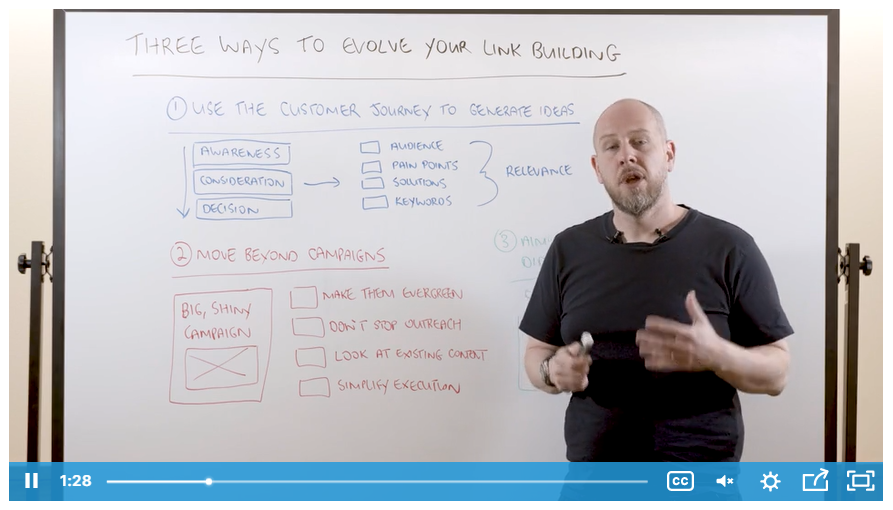
Whiteboard Friday by Moz, source
There are many types of videos that are compelling and don’t require deep pockets, such as customer testimonials, expert interviews, and educational talks. For example, Moz produces Whiteboard Friday, where they have experts explain SEO-related topics on a whiteboard. It’s the most popular SEO video series that has grown to millions of views, and the cost? A few minutes of someone’s time and a whiteboard.
Put simply, all you need is a video marketing strategy to get started, not a big budget.
2. You need to be an expert in video editing (or hire one)
Along similar lines, small businesses often believe they need to invest in an expert team of professionals to succeed with video content marketing. Or, if they opt for the DIY route, they need to spend a lot of time and effort learning the ins and outs of video production.
Truth is, all you really need is a decent smartphone with an easy-to-use video editing app installed on it to create engaging videos that boost your brand awareness.
Safely assuming you have the former, take your pick for the latter. There are plenty of beginner-friendly video editing apps available on the App Store and Google Play.
For instance, Videoleap is an intuitive app created by Lightricks that makes video editing accessible to everyone. It offers ready-to-use templates curated from trending creators that you can easily customize to make your own.
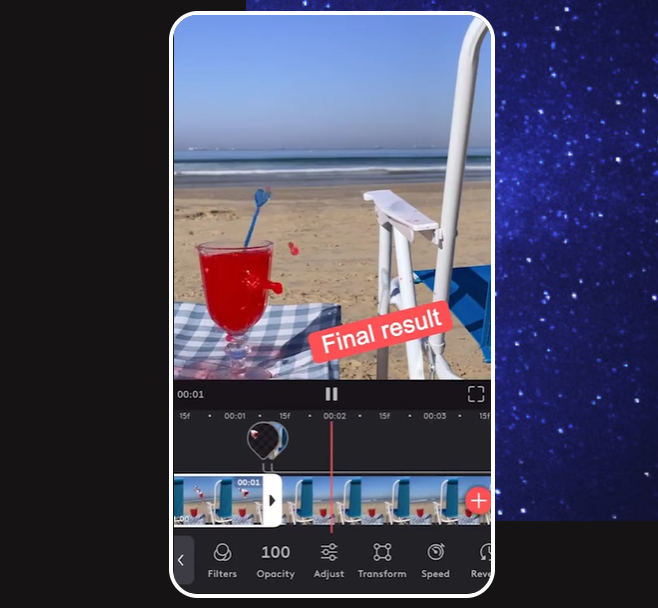
Videoleap app
It boasts an impressive library of exclusive visual filters, stickers, fonts, and stock music you can use to make creative videos that stand out. Add artistic effects and cinematic transitions, mix videos with images, use filters, speed up or slow down your clips, and more — all from a single, easy-to-use app on your mobile. The newest version of Videoleap even allows you to remove objects from entire clips with just a few taps.
Speaking of stock footage, here’s the next video marketing myth that needs to be busted…
3. You need to shoot the footage yourself
Even if you or your team are too busy to try your hand at shooting videos, you can still leverage video content marketing. That is, you don’t need to shoot all the footage yourself. There are plenty of platforms that offer free, high-quality stock footage you can use in your videos.
For example, Videvo is a stock footage platform that gives you access to over 50,000+ free stock video clips (HD and 4K), motion graphics, and animated backgrounds. It also offers hundreds of free sound effects and royalty-free music tracks to go along with the clips.
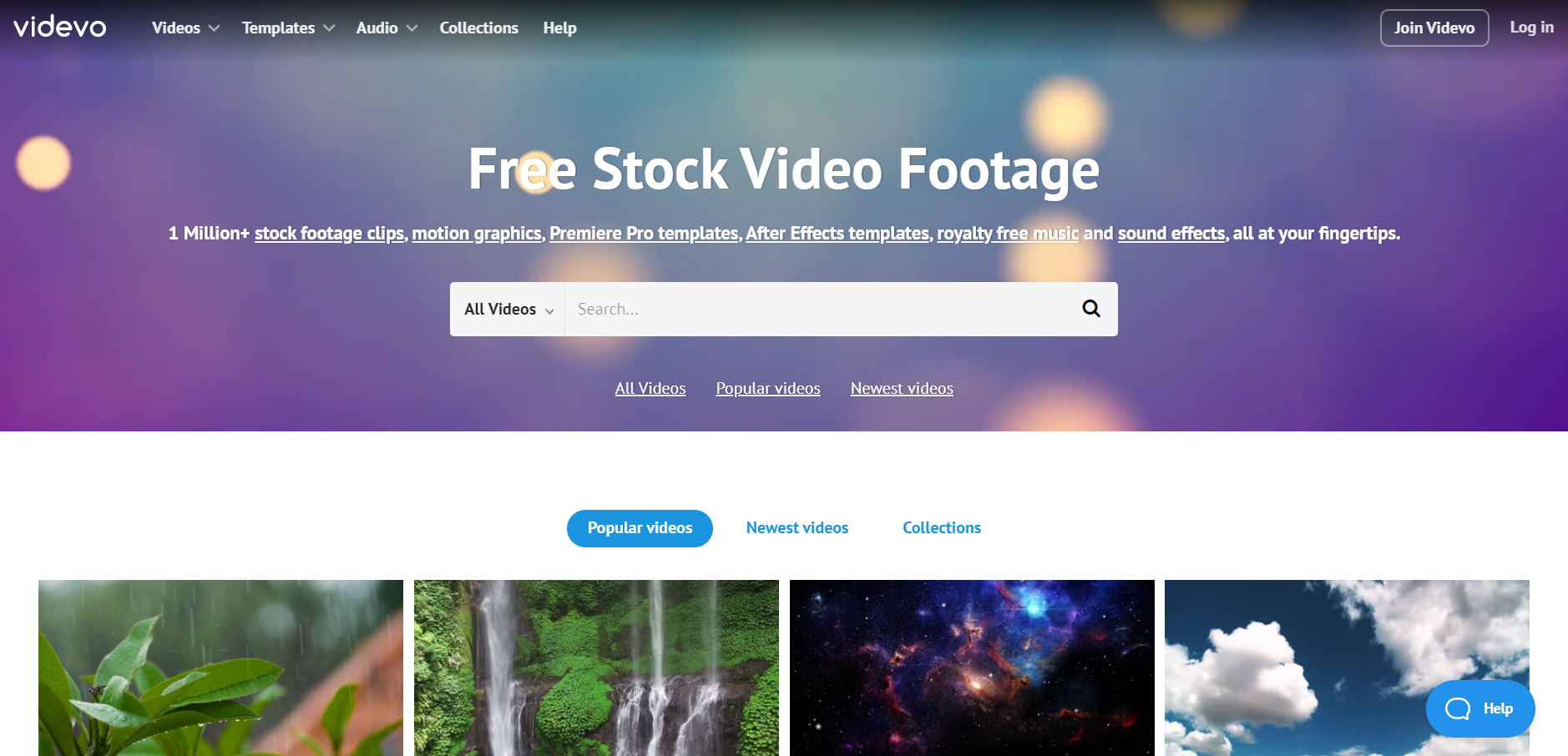
Videvo, Free Stock Video Footage
Its free video clips are licensed either under a proprietary Videvo Attribution License or Creative Commons 3.0, letting you use the content commercially. If you upgrade to a Premium plan, the license for free video and audio content is upgraded to Royalty-Free, which means you no longer have to provide attribution to the author.
Based on your video’s theme — say, a founder’s interview or a tour of your office — you can source clips from Videvo to serve as b-roll, intros, and outros for your main video.
4. It needs to be scripted
As touched upon earlier, authenticity is key for effective video content marketing. People get their dose of professionally edited cinematic storytelling from movies and TV shows. From brands, consumers crave real and organic content over carefully scripted perfection.
Here are a few video marketing ideas that let you ditch the script and satisfy your audience’s need for authenticity:
- “Day in the life” videos that let your audience get to know you in a relatable way.
- “Behind the scenes” videos and live streams that give your audience a peek into how your products are crafted, your company culture, etc.
- A weekly vlog with advice and tips backed by your niche experience.
Consider the controversial entrepreneur and internet personality Gary Vaynerchuk, for instance. He built a media empire largely fueled by selfie videos recorded on his mobile phone.
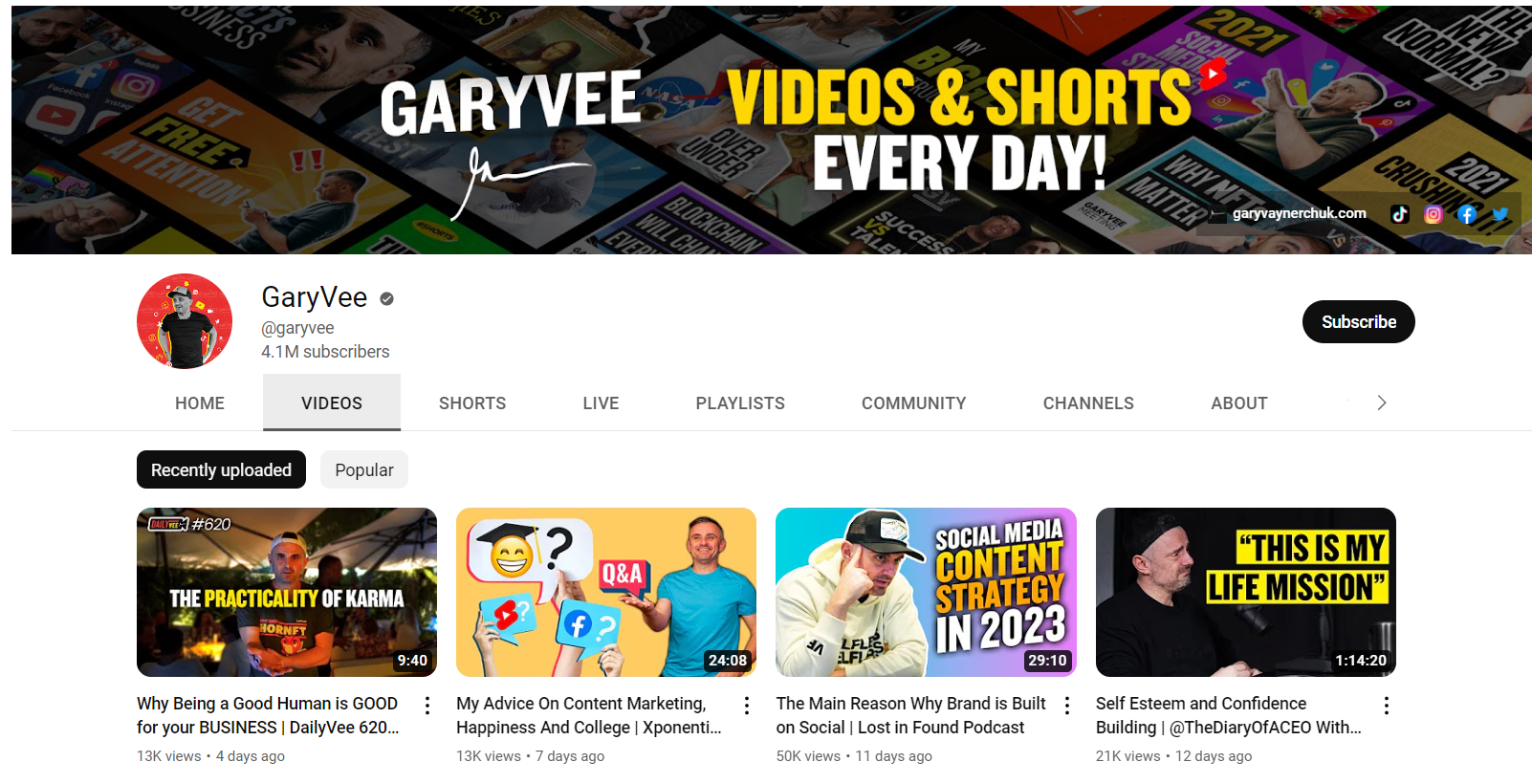
Gary Vaynerchuk’s YouTube channel, source
The bulk of his initial content was unscripted conversations and advice to young entrepreneurs. And the growth he achieved for his personal brand and media companies (VaynerMedia and VaynerX) with such unscripted videos speaks volumes.
5. Videos are only for social media and don’t help SEO
It’s true that videos are great for social media marketing. Especially the relatively new bite-sized video formats of Instagram Reels and YouTube Shorts that tend to have far better reach and engagement than standard photos.
But it’s a fallacy that videos don’t do anything to improve your content’s discoverability on search engines. That is, marketers often make the mistake of assuming that only written, keyword-optimized content helps their SEO efforts.
In reality, however, video content can help improve SEO in several ways:
- Video metadata: Search engines can read the metadata associated with a video, such as the title, description, tags, caption, and transcript. By using relevant keywords in this metadata, you can help search engines understand the content of your video and make that page more likely to appear in search results.
- Increased engagement: Videos can increase engagement on your website, which, in turn, boosts your SEO. For example, videos embedded within blog posts can improve the time on page and session duration, not to mention the user experience, thus signaling to search engines that you have valuable content worth ranking high.
- More backlinks: Videos can also help generate backlinks to your website, which have a strong and direct impact on your SEO. When other websites embed your video or link to it, it hints to search engines that your website is valuable and credible.
To sum up, video content does help SEO by making your website more engaging, providing search engines with more information about your content, and bringing in backlinks.
6. Your niche or industry won’t benefit from videos
You might think that video as a marketing tool is only engaging end consumers and not B2B buyers.
But it’s important to remember that even in B2B marketing campaigns, your audience is still made up of individuals. And video is a powerful means to reach and connect with those individuals who are responsible for making purchase decisions on behalf of their companies.
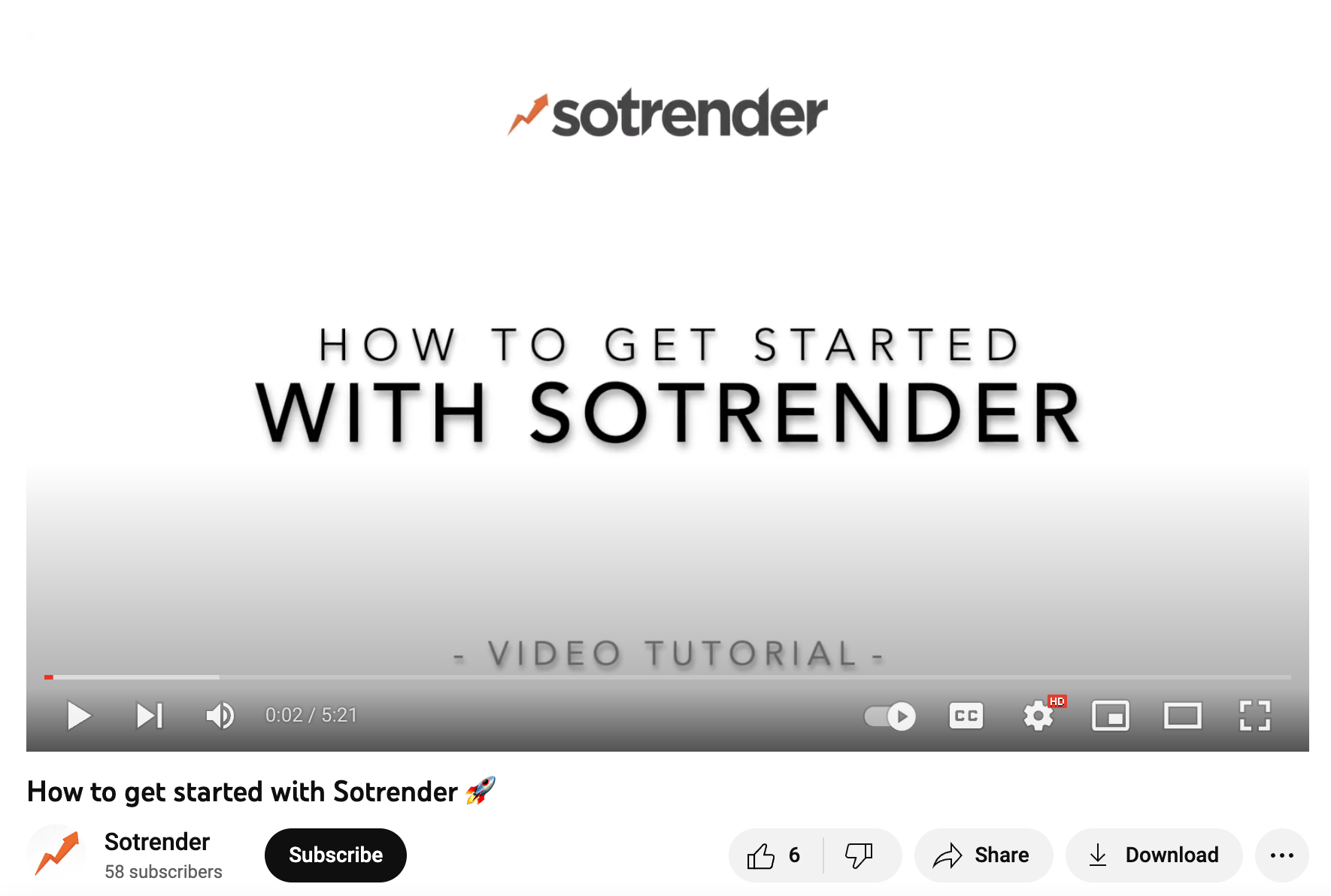
B2B YouTube channel example, Sotrender
In fact, 95% of B2B buyers say video plays a crucial role in their moving forward with a purchase. So, video is industry-agnostic and its demand is driven not by businesses, but by the people who work within them.
Product demos, explainer videos, testimonials, case studies, webinars, and executive interviews are a few types of videos that help better engage and educate B2B buyers, build greater trust and credibility in your brand, and ultimately increase conversions. For inspiration, check out these great examples of B2B product videos.
7. Video marketing’s ROI is difficult to track
The last video marketing myth that needs a nail in its coffin is about how business owners think they can’t accurately track the ROI of video marketing. In reality, whether it’s videos for social media or your website, the ROI of video marketing is easily trackable.
Consider YouTube, the first place you’ll likely invest your video efforts in. It provides a platform for creators called YouTube Studio, where you can track just about any metric, from views and click-through rates to the average view duration and exact dropoff points where you lose audience retention.
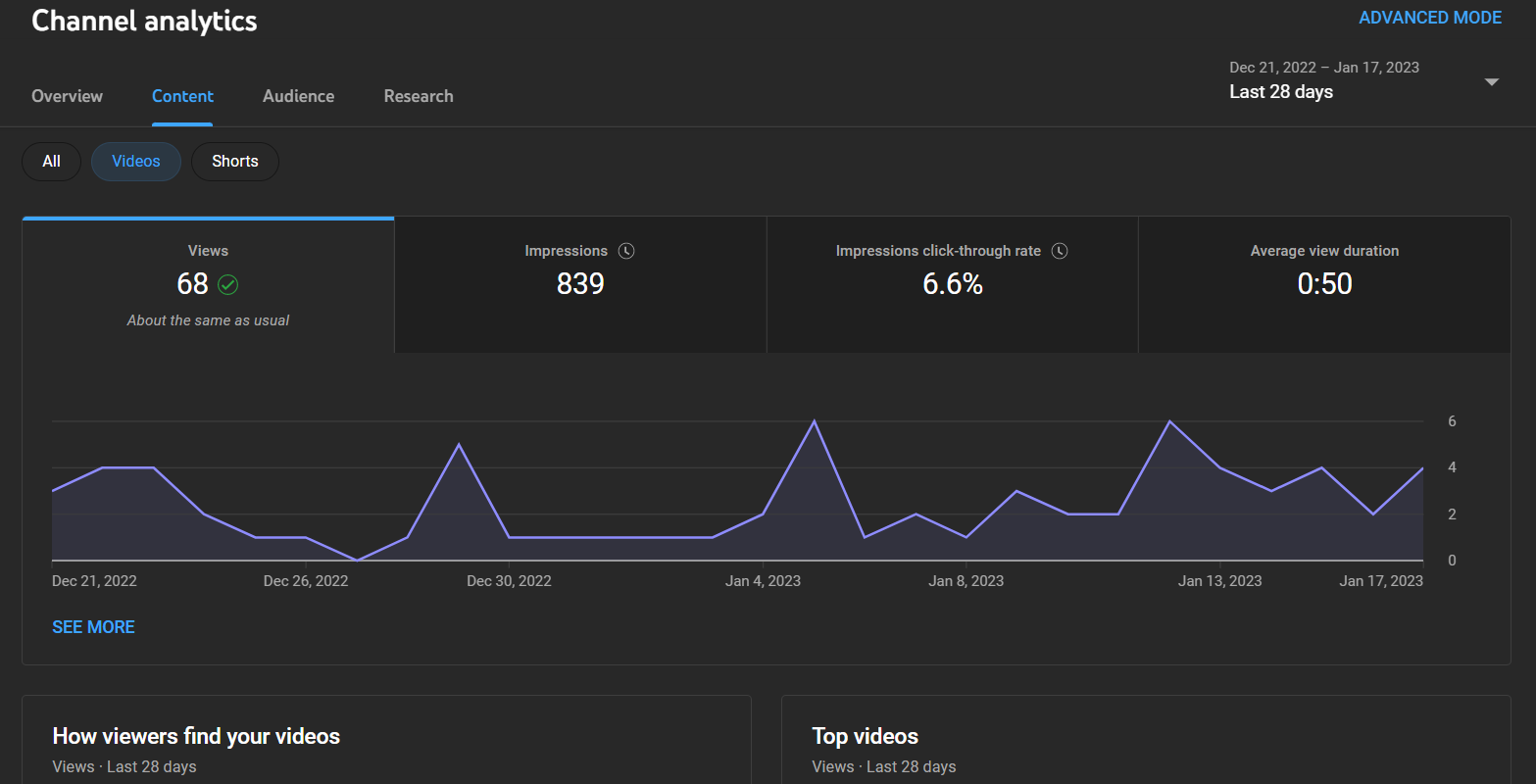
Channel analytics on YouTube
These metrics give you a granular view of how your videos are performing and which ones are the most effective in driving brand awareness, leading viewers to your landing pages, and helping boost conversions.
For videos on your website, you can use Google Analytics and Google Tag Manager to track video performance.
For social media videos, the built-in analytics dashboards on platforms like Instagram, Twitter, and LinkedIn provide detailed insights and metrics on how well your videos are doing in terms of reach and engagement (likes, comments, shares, saves, and so forth).
Furthermore, you can use a social media analytics and reporting tool like Sotrender that gives you a bigger picture of your social media videos and overall content performance, both paid and organic.
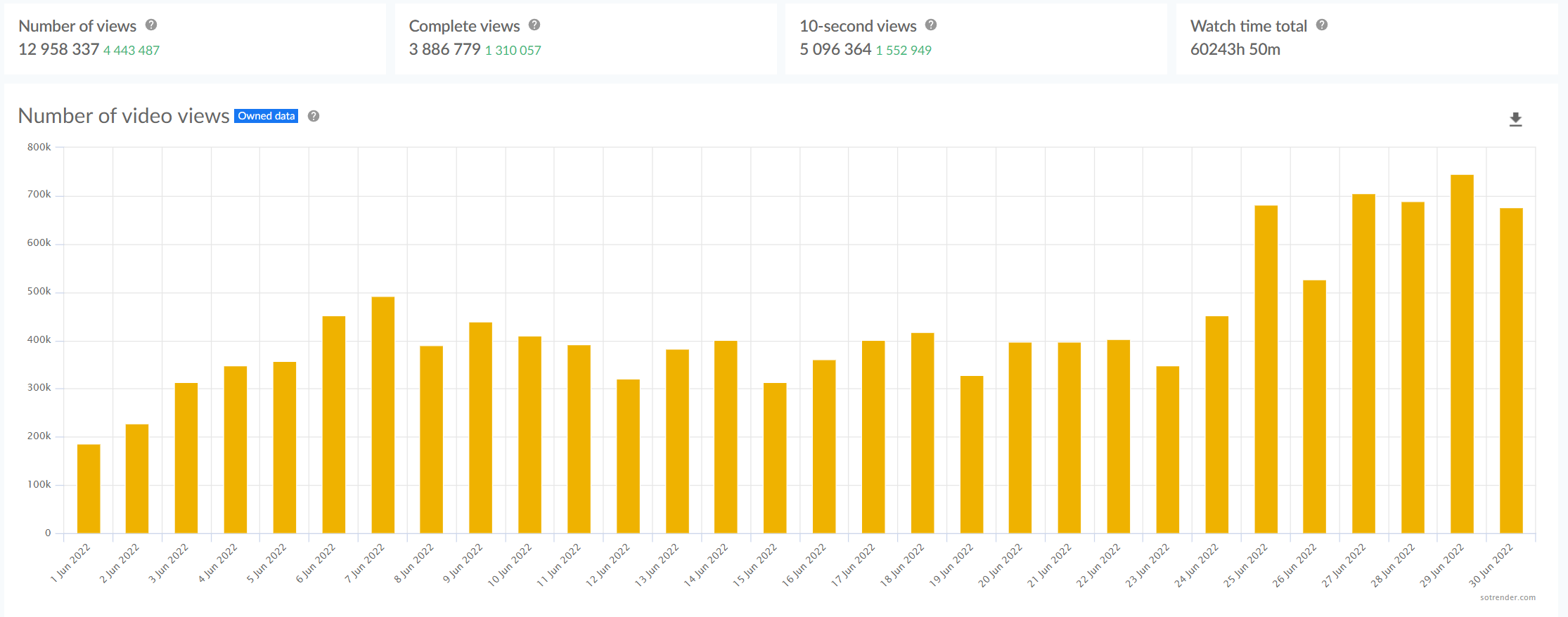
Number of video views day by day, Sotrender app
It also provides key insights about your competitors’ performance, generates automated white-label reports, and monitors audience demographics and engagement across all major social media channels.
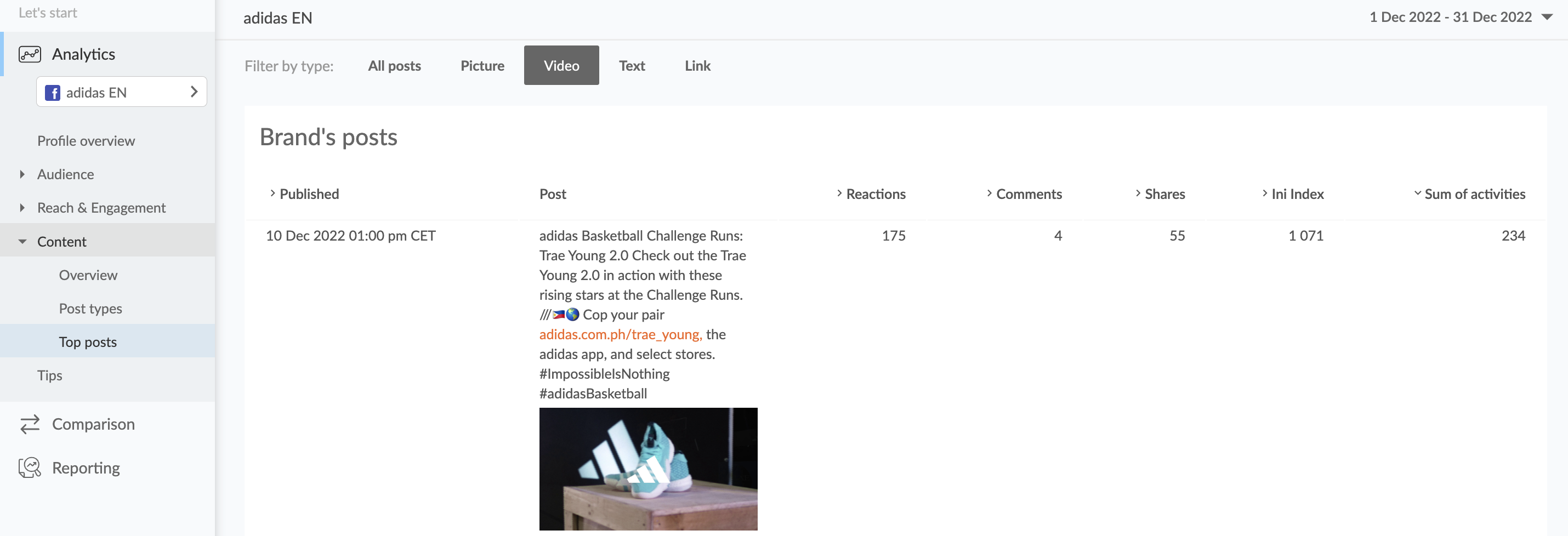
Competitors’ video post analytics in Sotrender
Over to you
By now, you must’ve realized that video is easier than you think. And that low-production value and unscripted videos are both desirable and trackable.
So, with all the video marketing ideas shared above, it’s about time your business jumps on the video marketing bandwagon. Consider the resources you can invest, brainstorm with your marketing team about the types of video suitable for your brand, and get cracking in 2023.








